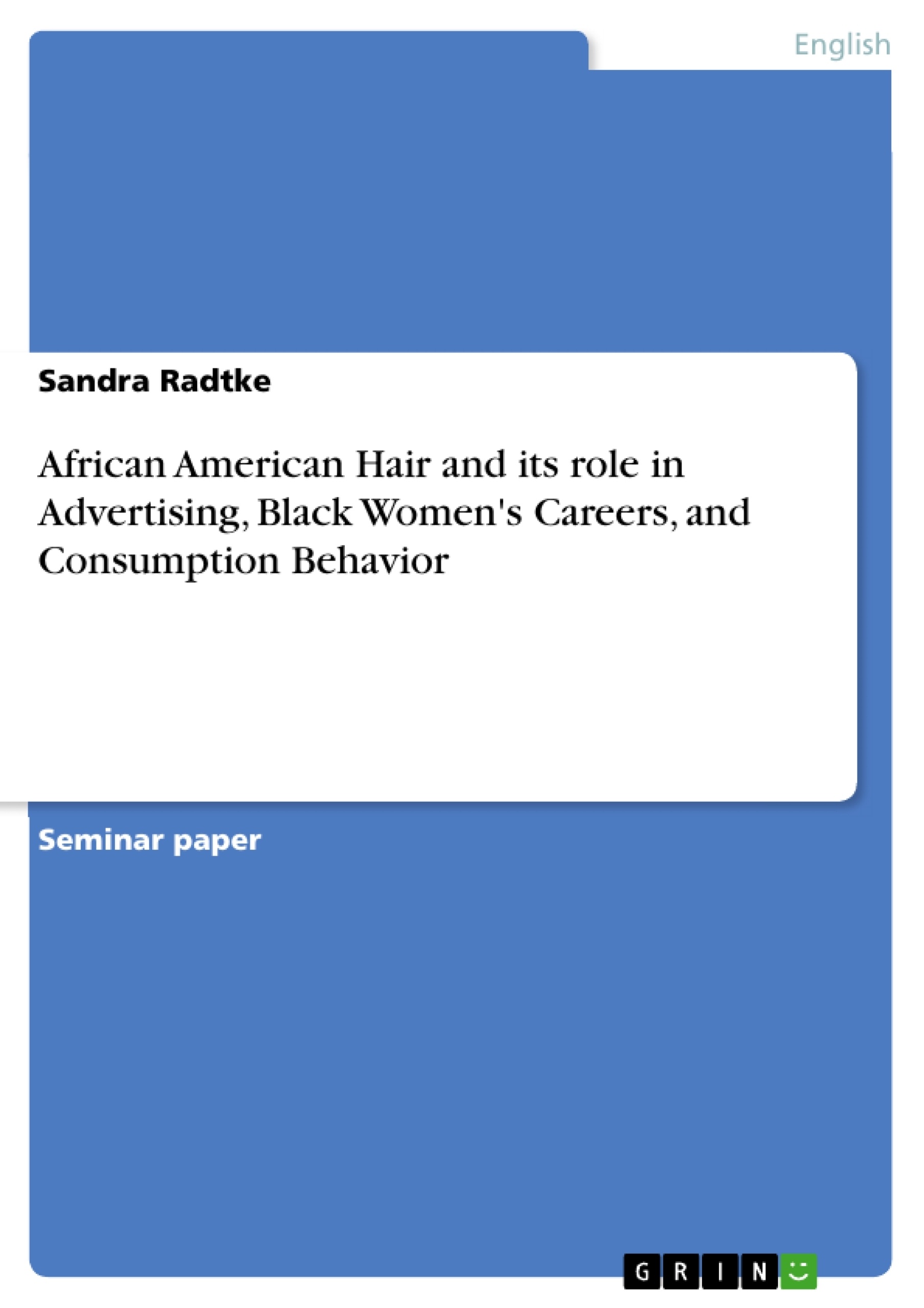In this paper for the seminar "The American Culture of Consumption", I want to deal with the complex topic of African American hair. In 1992, African Americans bought 34% of all sold hair care products in the United States. They spent thrice as much money on this than any other customer group. The majority of the purchased products were hair relaxers (Rooks, p.117).
These are only figures, but they demonstrate how important hair is to African Americans. I want to explain the roots of this significance in the first chapter and show how the way hair was rated changed during the times of slavery. Then, I want to examine advertisements for black hair treatment products by white- and black-owned firms to find out whether they differ in their strategies and how strong their influence on the consumers was and still is. The third chapter will deal with hair dressing as a career choice. In conclusion, I would like to attempt to provide answers for the question why African Americans might feel the urge to change their hair’s texture at all.
Table of Contents
- The History of African American Hair
- Advertisements for African American Hair Care Products
- Early Advertisements by White-owned Companies
- Early Advertisements by Black-owned Companies
- Current Advertisements
- Hair Care as a Career Choice
- Black Women's Magazines
Objectives and Key Themes
This paper aims to explore the complex significance of African American hair in the context of American culture, particularly in relation to advertising, career choices, and consumption behavior. The paper will delve into the historical roots of this significance, examining how perceptions of African American hair have evolved over time.
- The historical and cultural significance of African American hair
- The role of advertising in shaping perceptions and consumption patterns related to African American hair
- The impact of hair care on career choices within the African American community
- The influence of black women's magazines on hair care practices and ideals
- The complex relationship between hair texture, race, and identity in American society
Chapter Summaries
The first chapter examines the historical significance of hair in African cultures and how this significance was disrupted by the slave trade. It discusses the racialized perceptions of hair texture and its link to ideas of intelligence and humanity during the era of slavery.
The second chapter delves into the world of advertising for African American hair care products, exploring the strategies employed by both white-owned and black-owned companies. It examines the historical evolution of advertising campaigns and their potential influence on consumer behavior.
The third chapter focuses on hairdressing as a career choice within the African American community, highlighting its economic and social implications. It explores the factors that contribute to the popularity of this profession among black women.
Keywords
The primary focus topics of this paper include African American hair, advertising, consumption behavior, race, identity, and hair care. The paper explores the historical context of African American hair and its evolution in relation to advertising, career choices, and societal expectations. Additionally, the paper examines the role of black women's magazines in shaping hair care practices and ideals.
- Quote paper
- Sandra Radtke (Author), 2003, African American Hair and its role in Advertising, Black Women's Careers, and Consumption Behavior, Munich, GRIN Verlag, https://www.grin.com/document/40551



